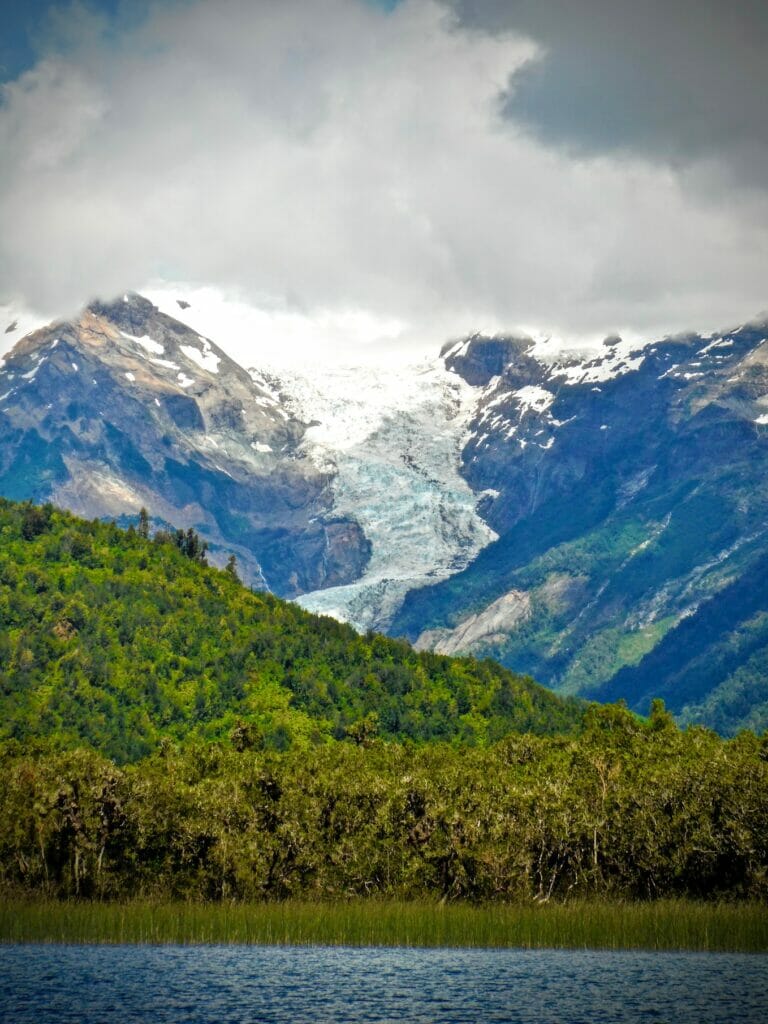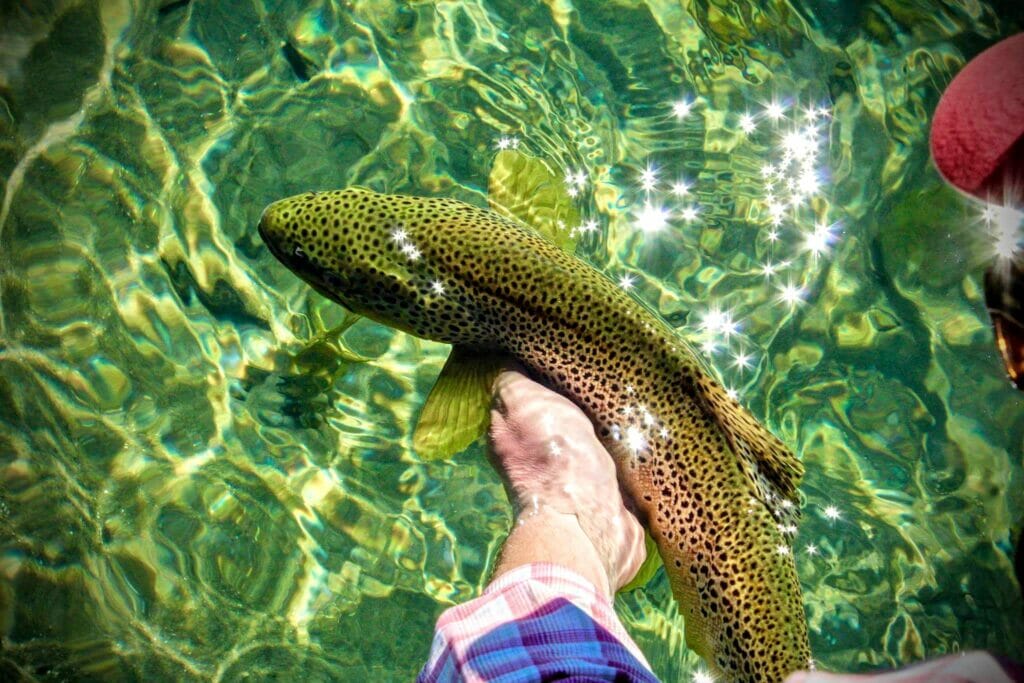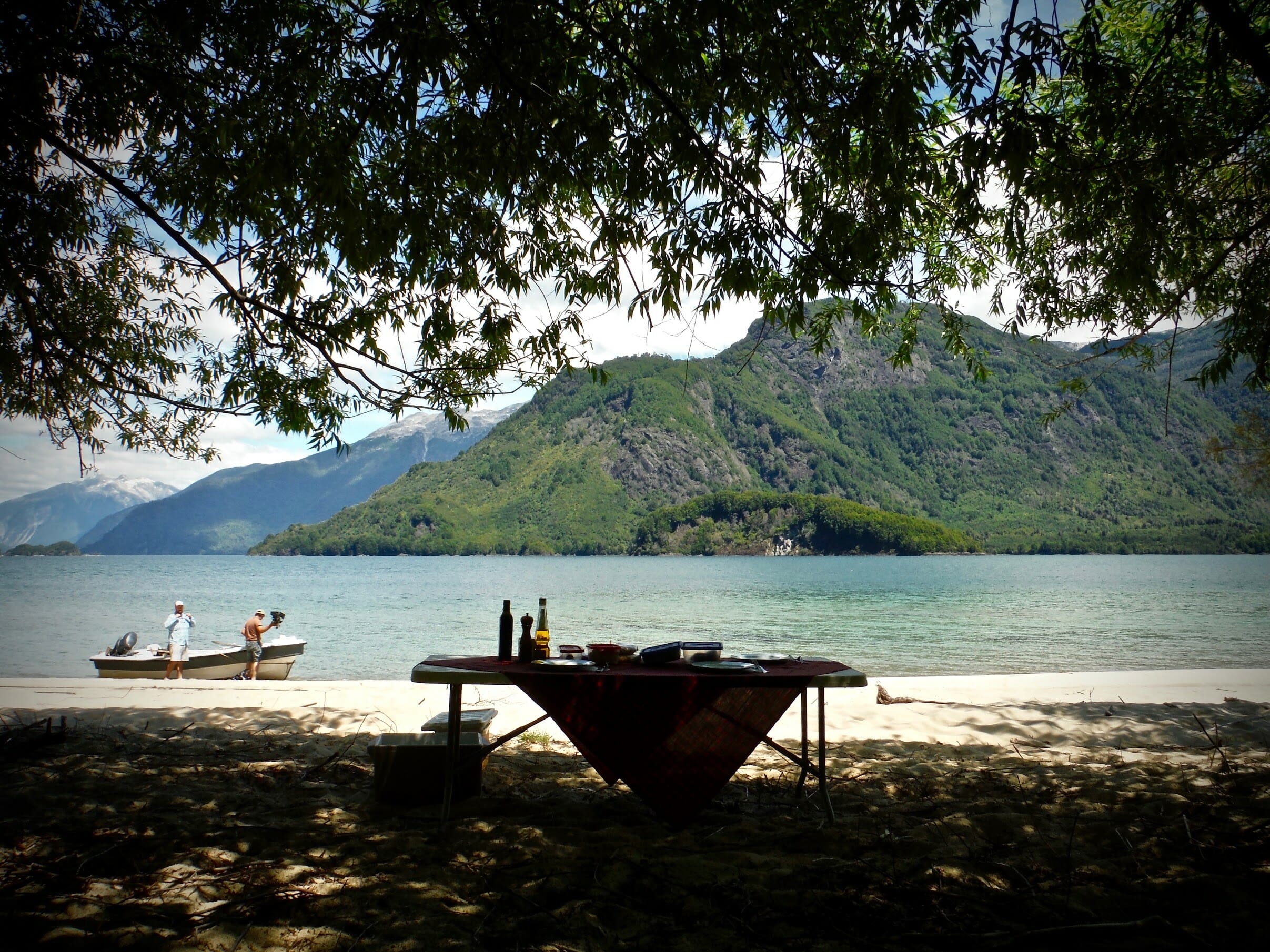Chris Hunt photo.
A distinctly tropical experience in a distinctly trouty wonderland
Imagine gliding over that stereotypical, crystal-clear Caribbean flat in search of bonefish or permit, your Spanish-speaking guide doing his best to meet you on your side of the language barrier. Everything is just as it should be. The wind is modest. The sun is bright. The sandy flat is primed to reveal that first tail.
And then you see movement off in the distance. A shadow at first, and then a subtle wake. Then the fish, solid and dark against the taupe background, comes into focus. It’s coming at you.
“Cast your line,” the guide says, and you’ve already got it loaded. The cast is short of the charging fish, but that’s okay, because it’s closing the distance quickly. Strip. Strip.
“He ate it!” the guide says, and you pull tight, setting the hook and sealing that connection between man and beast.
And then you look up, away from the water, to see the ice-capped Andes towering above you, their glaciers sending silty rivers down the shoulders of verdant slopes. And the fish you just hooked? A 23-inch brown trout with an attitude. The fly? A size 6 olive Woolly Bugger.

Welcome to Lago Yelcho in Chilean Patagonia. Here, nothing is as it seems, but, after a fashion, everything is as it should be.
Adrian, our guide for several days of pre-pandemic fishing the waters of Lago Yelcho for truly bestial browns and rainbows, would have made a fine Yucatan flats guide. Most of the waters we visited on Yelcho were shallow and not unlike the green waters of some Caribbean paradise. The only differences? When it rained, it rained cold, and the horizon was interrupted by Andean wonder.
Obviously, chasing trout over sand flats wasn’t at all what we expected when we booked passage to the mountains of South America. In the rainforests about 45 minutes by plane south of Puerto Montt, Chile, the trout grow fat in the rivers and lakes, and the location is ideal for jumping to a variety of fly fishing, from chasing trout deep against sheer cliff faces that hug the lake to swinging streamers and drifting dries under cutbanks on nearby rivers like the Yelcho and Futaleufu.
But this little sliver of the experience stands out to me.
As the big brown trout peeled line from the reel and headed across the shallows to an abrupt drop-off, I looked at Adrian and said, “I feel like I’ve just hooked a bonefish.”
Digest that for a minute. Moments before we arrived at the flat, we motored by the mouth of a glacial river that was dumping silver, silt-laden water—water that was frozen a few hours earlier— into this large Andean lake. Mountains—this is tall country—ring the lake like guardians and wear crowns of ice and snow. Of course it’s trout country.

But if you squint a little and tilt your head just right and don’t bother to look up, well, you could be in Belize.
Adrian, who works out of the Yelcho en la Patagonia lodge, drifted the little skiff right along the edge of the drop-off as we fished this section of the lake. Off to the starboard, the flat stretched maybe a hundred yards from the edge of the lake to where it ended abruptly, and where the lake bottom disappeared altogether into a deep, green abyss. The lake is home to a fabled population of really big dragonflies. While we did get some topwater action using high-floating dry flies, the most effective way of appealing to Yelcho’s wild browns and rainbows was to cast something that looks like a dragonfly nymph. The olive green Woolly Bugger is, without hesitation, the fly of choice come summer on Yelcho.
Under counsel from our guide, we first fished the edges of the deep water, where we hoped big brown trout might be lying in wait. Casting sinking lines, we managed to move a few monsters from their home in the deep, including one that probably stretched the tape to 24 inches and might have weighed eight pounds or so.
But once that brown ghosted over the sand, I had no appetite for casting a sinking line into the deep. I had moved into a different mode—my mind was in the Bahamas, and when I saw that fish move off in the distance, so was my cast.
It was an odd juxtaposition, to be standing in the stern of a sturdy fishing skiff amid alpine peaks while staring intently through polarized lenses for shadows, tails and wakes across a stretch of foot-deep water. It confused the psyche and tilted my angling axis just a bit. But when a fish appeared, and when I laid down a long cast and began the strip, I stepped from one piscine world into another.
It’s a curious place, this lake situated at the foot of the glaciers. It’s drop-dead beautiful, and its trout are fat and happy, moving among a variety of habitats and tempting anglers with new challenges at every turn.
And brown trout on the flats? I’d do that again in a minute.



